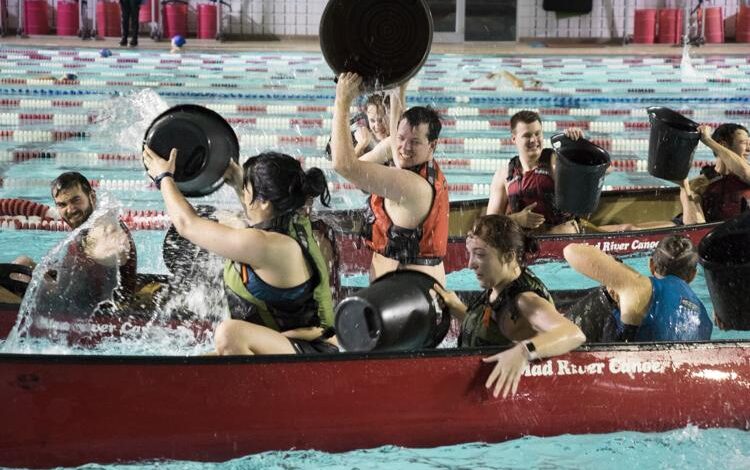Intramural Sports Definition: 1A Deep Dive into Campus and Community Recreation

Intramural sports Definition are a core part of recreational life in schools, universities, and communities, offering everyone beginners to seasoned athletes a chance to participate in sports. Unlike intercollegiate or professional sports, intramural leagues are designed for amateur players who are looking for fun, fitness, and social connections. Whether you’re kicking a soccer ball on a sunny afternoon or competing in an intense volleyball match, intramural sports provide a way for individuals to engage in friendly competition. In this article, intramura we’ll explore the full definition of intramural sports, their benefits, and how they shape the athletic and social landscape of communities.
What Are Intramural Sports Definition?
When you hear the term “intramural sports,” you might think of casual weekend leagues or pick-up games at a local gym. In essence, intramural sports refer to organized recreational sports competitions, usually within a specific institution like a university, college, or even within a community setting. The word “intramural” comes from the Latin intra meaning “within” and mural meaning “walls.” So, at its core, intramural sports are competitions that occur within a defined group, often limited to members of a specific institution or community
Intramural sports leagues can vary greatly in size and structure, depending on the organization that runs them. For example, in a university setting, students may participate in intramural leagues for various sports, from basketball and soccer to more niche offerings like ultimate frisbee or dodgeball. Similarly, in community centers, intramural leagues might offer sports like softball, volleyball, and even bowling.
These leagues are typically open to all skill levels, with a heavy emphasis on recreation rather than intense competition. While some players may have competitive backgrounds in the sports they play, the majority are simply looking for an outlet to stay active, meet new people, and have fun. The key aspect that distinguishes intramural sports from other competitive sports leagues is that they emphasize inclusivity, participation, and fun, rather than focusing solely on winning.
The Origins of Intramural Sports
The concept of intramural sports has roots in ancient civilizations, where people engaged in sports activities as a means of fostering unity and personal well-being. However, the formalization of intramural sports as we know them today can be traced back to the early 20th century. In the United States, universities began organizing recreational leagues for their students, offering a structured way to engage in sports outside of formal intercollegiate competition.
Initially, these leagues were quite informal, often organized by students themselves. Over time, universities began to see the benefits of structured recreational programs, including increased student engagement, physical fitness, and social connections. As a result, intramural programs began to be more systematically organized and formalized, leading to the expansive networks of intramural leagues that we see in educational institutions and communities today.
The Importance of Intramural Sports
Intramural sports provide a wealth of benefits to participants, making them a cornerstone of university campuses, schools, and local community organizations. From enhancing physical health to building social connections, intramural sports contribute to overall well-being in several ways. Let’s break down why these sports are so important.
- Promoting Physical Health and Fitness
The most obvious benefit of intramural sports is the opportunity they provide for physical exercise. Many people, especially in today’s digital age, lead sedentary lifestyles, which can lead to a host of health problems such as obesity, heart disease, and poor mental health. Intramural leagues offer a low-pressure way for people to stay active, regardless of their athletic ability.
Whether you’re a seasoned athlete or a first-time player, intramural sports can provide a fun and engaging way to keep moving. From the aerobic exercise provided by soccer or basketball to the muscle-building benefits of weight training in a flag football league, these sports cater to a wide range of physical abilities. Importantly, because they are not professional leagues, there’s no intense pressure to perform at a high level, which makes them less intimidating for newcomers.
- Mental Health and Stress Relief
Physical activity is well-known for its mental health benefits, and intramural sports are no exception. Regular participation in sports helps to alleviate stress, improve mood, and boost self-esteem. For many individuals, balancing school, work, and personal life can create overwhelming stress. Engaging in a fun, low-stakes sporting activity can provide an essential break and serve as a healthy outlet for tension.
The endorphin rush that comes with exercise plays a big role in reducing anxiety and depression. It also improves sleep quality, which in turn boosts overall mental clarity and productivity. For university students who are juggling academic workloads, intramural sports offer a perfect way to unwind after a long day of studying or attending lectures.
- Building Community and Social Connections
Another standout feature of intramural sports is the social aspect. These sports provide an opportunity to meet new people and form lasting friendships. For many students, intramural leagues are their first experience with organized team activities, which helps build interpersonal skills and confidence. Whether you’re playing in a co-ed league or joining a team with friends, intramural sports offer a low-pressure setting to connect with others outside of your usual social circle.
This sense of community is particularly important in college settings, where students may feel isolated or disconnected, especially during their first year. Joining a team can help break down barriers and allow for meaningful relationships to form, which can contribute to a positive overall college experience. On a larger scale, these social bonds are a big reason why many people continue to participate in intramural sports long after their college years.
Types of Intramural Sports
While the term “intramural sports” can refer to almost any recreational league or competition within a community or institution, there are some sports that tend to be more common in these leagues. The variety of sports available in intramural leagues means there’s something for everyone, no matter your interests or skill level. Let’s look at some of the most popular intramural sports you can find.
- Team Sports
Team sports are a staple of most intramural leagues. These are typically organized by a series of games played between two teams, with participants competing to win based on scoring or other criteria. Team sports offer a unique blend of physical exercise and camaraderie, making them one of the most popular choices for intramural leagues.
- Basketball: One of the most popular team sports in intramural settings, basketball is easy to organize and requires minimal equipment. Most leagues offer a range of divisions, from recreational to more competitive divisions, to accommodate different skill levels.
- Soccer: Soccer, or football as it’s called outside the United States, is another widely popular intramural sport. With simple rules and a relatively low barrier to entry, it’s accessible to anyone, whether you’re playing on a full-size field or a smaller indoor arena.
- Softball/Baseball: Softball is often seen as the quintessential intramural team sport in many communities. It’s casual, social, and relatively low-impact, making it ideal for all levels of play.
- Individual Sports
Not all intramural sports are team-based. Some people prefer individual competitions where they can focus on their performance and challenge themselves. These types of sports tend to be less about winning as a team and more about personal achievement.
- Tennis: Many universities and community centers offer intramural tennis leagues, where individuals can compete one-on-one or in doubles matches. These leagues often cater to a variety of skill levels, from beginner to advanced players.
- Running: Track and field events, as well as road races, can also be a big part of intramural leagues. Whether it’s a 5K or a marathon relay, running competitions allow participants to test their endurance and personal bests.
- Alternative and Niche Sports
Intramural sports leagues also often provide opportunities to try out less traditional sports. These niche sports are great for people looking to try something new or for those who may not be interested in mainstream activities.
- Ultimate Frisbee: Ultimate Frisbee has seen a rise in popularity in recent years. It’s a non-contact team sport that emphasizes agility, coordination, and sportsmanship.
- Cornhole: A staple at tailgate parties, cornhole (beanbag toss) has become a fun, laid-back intramural sport that anyone can enjoy.
How to Get Involved in Intramural Sports

Getting involved in intramural sports is relatively simple, especially if you’re at a school or university that has a well-established program. Most intramural leagues allow participants to sign up either individually or as a group, and many institutions offer registration through online platforms for added convenience.
Step 1: Check Availability
If you’re a student, intramural sports programs are often offered through campus recreation departments. Schools typically offer intramural sports as part of their wellness initiatives, so be sure to visit your school’s website or check your student handbook for available programs. If you’re in a community setting, look into local community centers or public recreation programs to see what sports are offered in your area.
Step 2: Choose Your Sport and Team
Intramural leagues are usually divided into different divisions based on skill level, so don’t worry if you’re a beginner—there’s always an option for you. Some sports, like volleyball or soccer, may have separate co-ed divisions, giving you more flexibility to join a team with friends or meet new people in a less competitive environment.
Step 3: Register and Prepare
Once you’ve selected your sport and team, the next step is registration. Registration may require a small fee, and you may be asked to sign a waiver.
FAQS
1. What are intramural sports?
Answer: Intramural sports are organized recreational sports competitions that take place within a specific institution or community, such as schools, universities, or local organizations. They are designed for amateur players of all skill levels and emphasize fun, fitness, and social interaction rather than intense competition. Common examples include basketball, soccer, volleyball, and ultimate frisbee.
2. Who can participate in intramural sports?
Answer: Intramural sports are open to everyone, regardless of skill level. Whether you’re a seasoned athlete or a beginner, these leagues are designed to be inclusive, providing an opportunity for individuals to stay active, meet people, and enjoy sports in a low-pressure environment.





